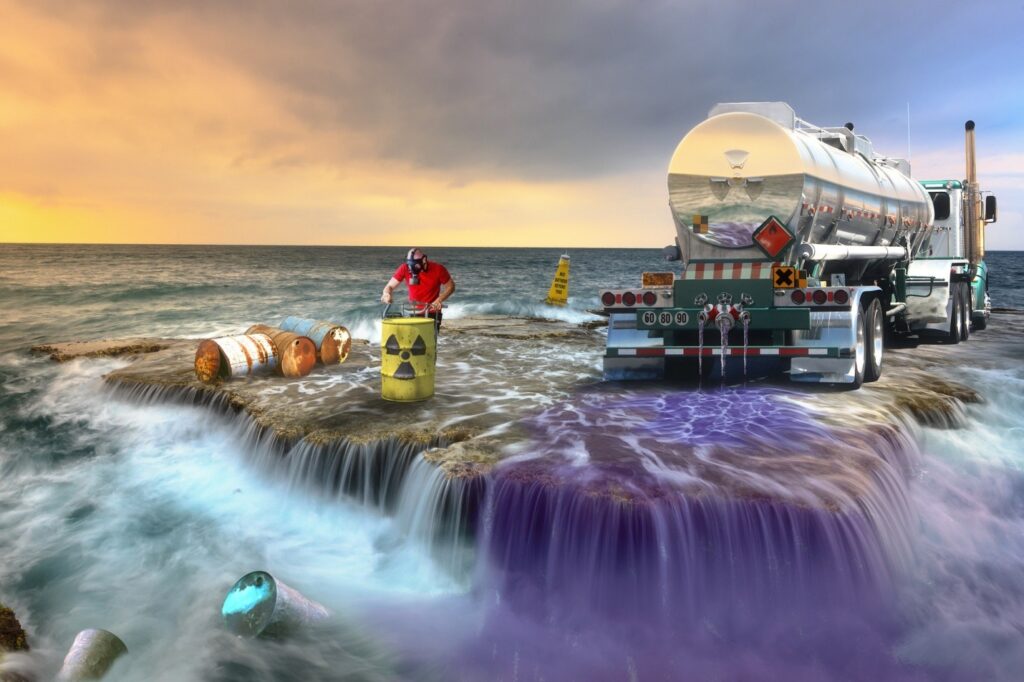Reclaim Waste Fundamentals Explained
Reclaim Waste Fundamentals Explained
Blog Article
Our Reclaim Waste PDFs
Table of ContentsOur Reclaim Waste StatementsHow Reclaim Waste can Save You Time, Stress, and Money.The Ultimate Guide To Reclaim WasteFacts About Reclaim Waste UncoveredThe Best Strategy To Use For Reclaim Waste
Discover the kinds, incidents, and forms of fluid waste. Residential sewer waste refers to the waste and items from a household sewage-disposal tank. This sort of waste is developed by humans in houses, institutions, and various other buildings. This only consists of septic tanks that have a drain area. The appropriate monitoring and disposal of domestic sewage waste require liquid waste to be transferred to a sewage treatment plant where the proper methods and equipment are related to cleanse and take care of waste.
Commercial waste usually includes potential threats, such as combustible products or a mix of liquid and solid waste items, and calls for an extra sophisticated and comprehensive disposal process. The disposal of industrial waste usually involves the filtering of waste before transportation to ensure secure and correct disposal. Hazardous waste is developed from byproducts and runoff of industrial processes and production.
This sort of waste can not make use of the exact same sewage management transport or processes as septic or business liquids. The hazardous waste administration process requires the evaluation and testing of fluid waste prior to it undertakes the disposal procedure (liquid waste disposal). Overflow waste is the liquid waste that comes from drainage and excess stormwater in highly booming areas or cities
Runoff waste can trigger contamination and flooding if not dealt with properly. Find out more concerning sewage system cleansing and waste management. Making certain appropriate waste management can stop catastrophes and decrease ecological injury. Both people in property setups and specialists in commercial or production markets can benefit from comprehending the procedures and guidelines of fluid waste administration.
5 Simple Techniques For Reclaim Waste
Call PROS Services today to find out about our waste monitoring and disposal services and the appropriate methods to care for the liquid waste you produce.
(https://issuu.com/reclaimwaste1)Do you understand what happens to your water when you end, flush the commode or drain the washing maker? No? Well, it's worth understanding. This supposed 'wastewater' is not only an essential resource yet, after therapy, will be released to our land, rivers or the ocean. Made use of water from commodes, showers, baths, kitchen sinks, laundries and industrial procedures is referred to as wastewater.

water made use of to cool down machinery or tidy plant and devices). Stormwater, a kind of wastewater, is drainage that moves from farming and urban locations such as roof coverings, parks, gardens, roads, paths and seamless gutters right into stormwater drains pipes, after rainfall. Stormwater moves unattended directly to neighborhood creeks or rivers, at some point reaching the ocean.
Rumored Buzz on Reclaim Waste
In Queensland, most wastewater is treated at sewer therapy plants. Wastewater is transferred from domestic or industrial websites with a system of drains and pump stations, known as sewerage reticulation, to a sewer therapy plant.
The Department of Natural Resources recommends local governments concerning handling, operating and preserving sewerage systems and therapy plants. In unsewered areas, local governments might call for homeowners to set up private or family sewage treatment systems to treat domestic wastewater from commodes, kitchen areas, washrooms and washings. The Division of Natural Resources authorizes the use of household systems when they are confirmed to be efficient.
Most stormwater obtains no treatment. In some new communities, therapy of some stormwater to remove trash, sand and gravel has begun making use of gross toxin catches. Wastewater treatment takes place in four phases: Removes strong matter. Bigger solids, such as plastics and other things incorrectly released to drains, are removed when wastewater is travelled through displays.
Wastewater then moves right into huge tanks where solids clear up and are removed as sludge. Oil and scum are skimmed from the surface area. Uses small living microorganisms called micro-organisms to damage down and remove remaining dissolved wastes and fine fragments. Micro-organisms and wastes are incorporated in the sludge. Eliminates nitrogen and phosphorus nutrients that might create algal blossoms in our rivers and endanger water life.
Getting The Reclaim Waste To Work
Nutrient removal is not readily available at all sewer treatment plants because it needs costly specialist devices. Clear fluid effluent generated after therapy might still contain disease-causing micro-organisms - liquid waste disposal.

This usually indicates wastewater needs to be treated or impurities eliminated before it can be discharged to waterways. The majority of wastewater streams into the sewage system. Under the Act, city governments carry out approvals and permits for ecologically relevant tasks (ERAs) entailing wastewater releases that might have a neighborhood impact. The department carries out authorizations and permits to Ages involving wastewater releases that may have a local or statewide effect.
The Ultimate Guide To Reclaim Waste
Monitoring offers factual info concerning water quality and can validate that permit conditions are being satisfied. The info obtained via surveillance gives the basis for making water high quality choices.
Report this page